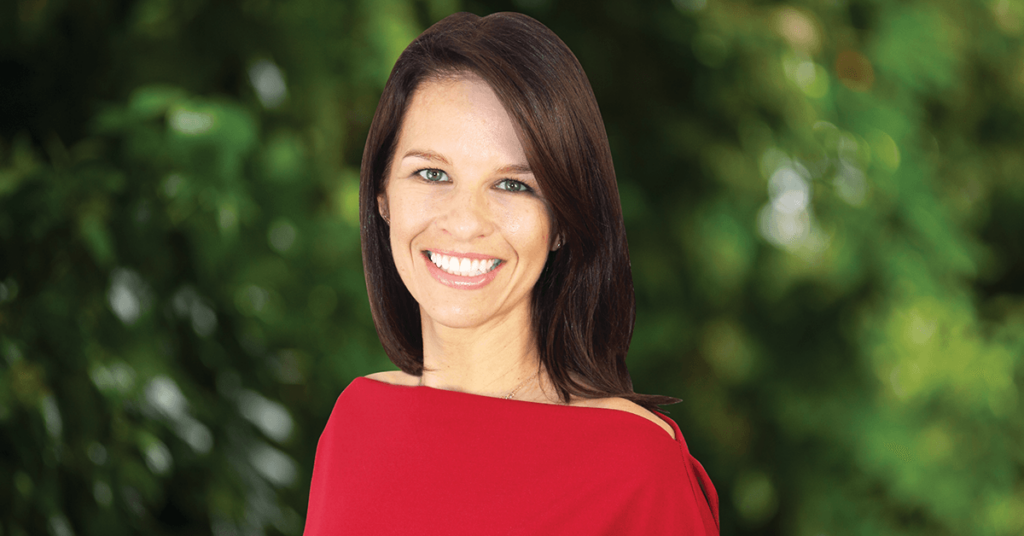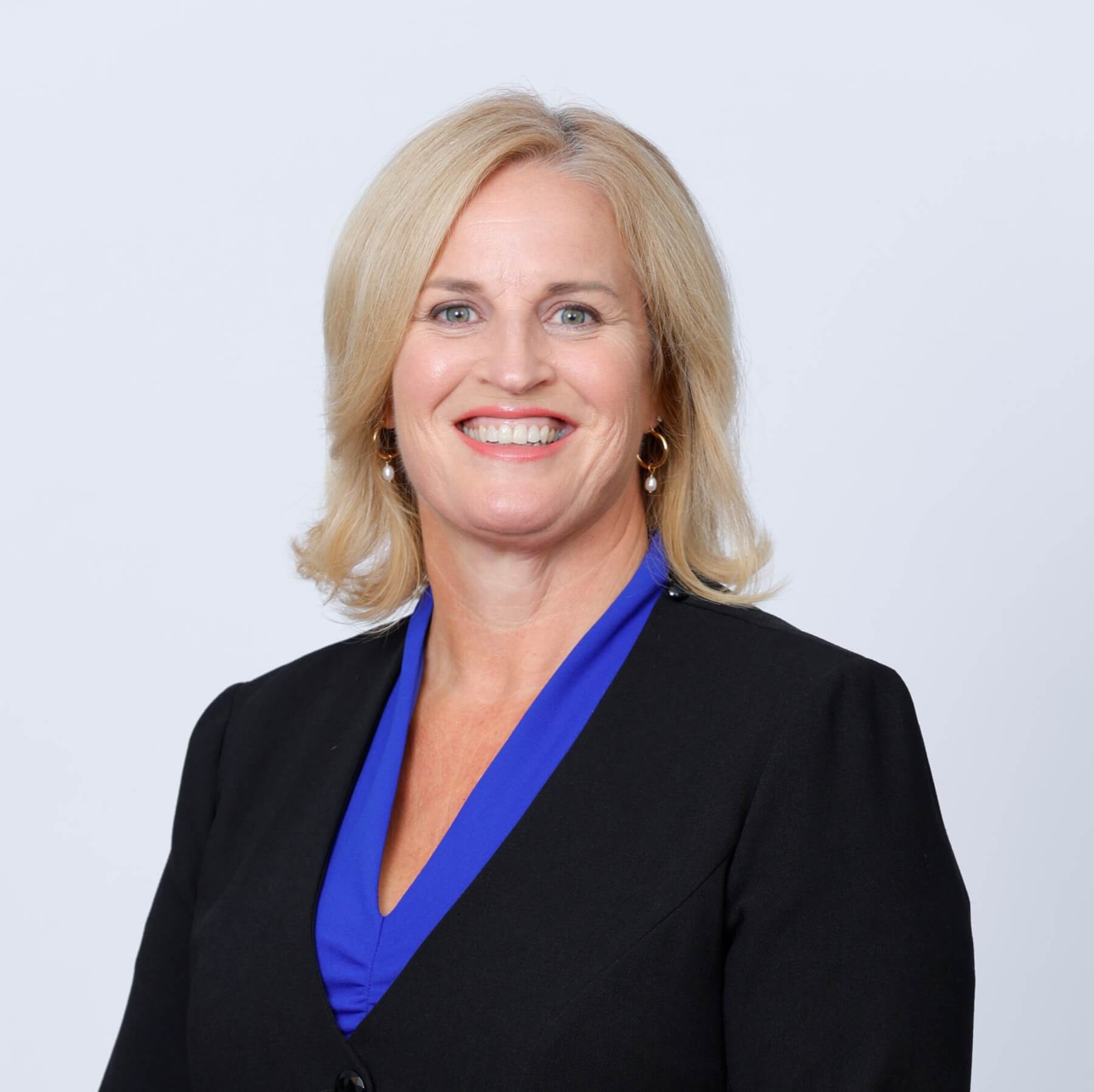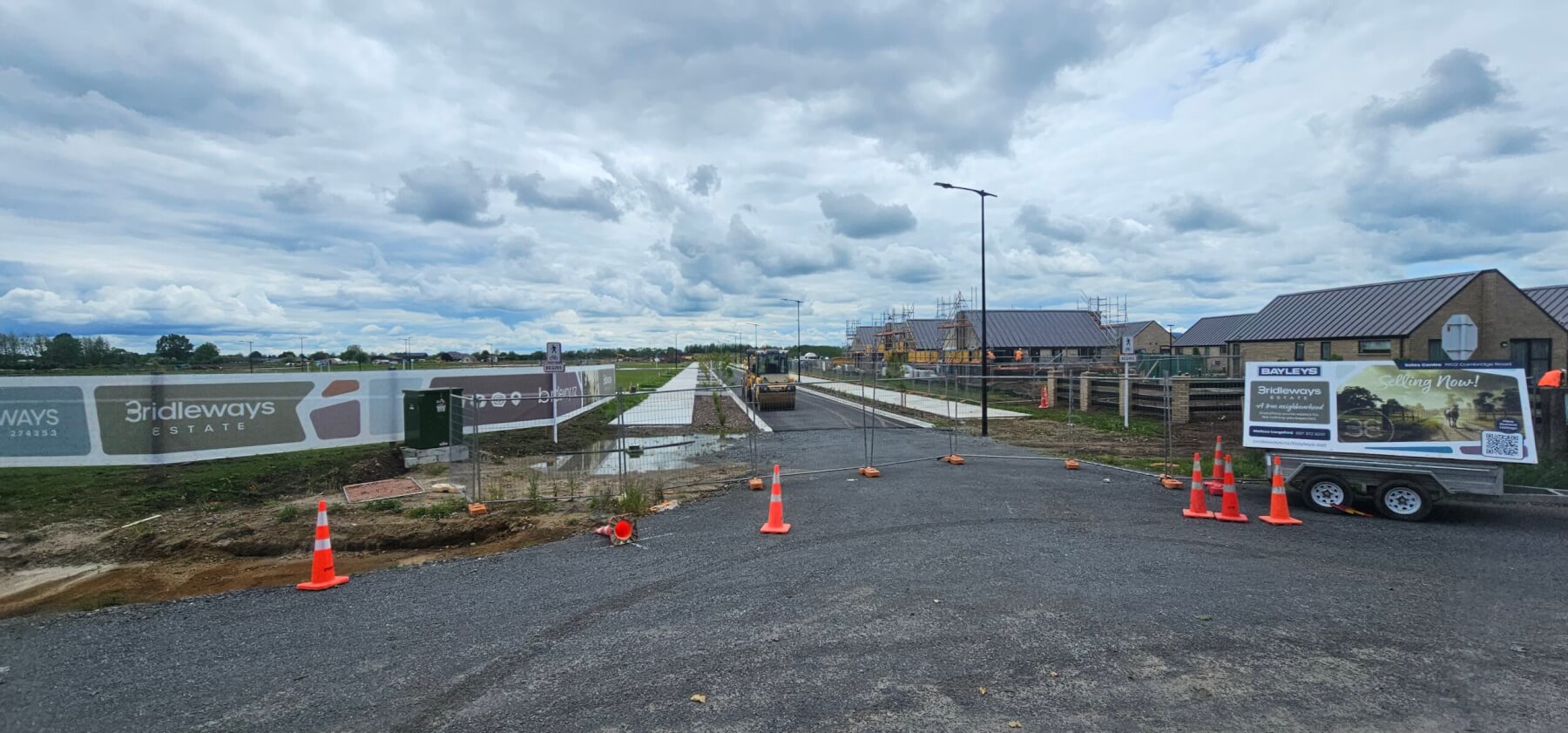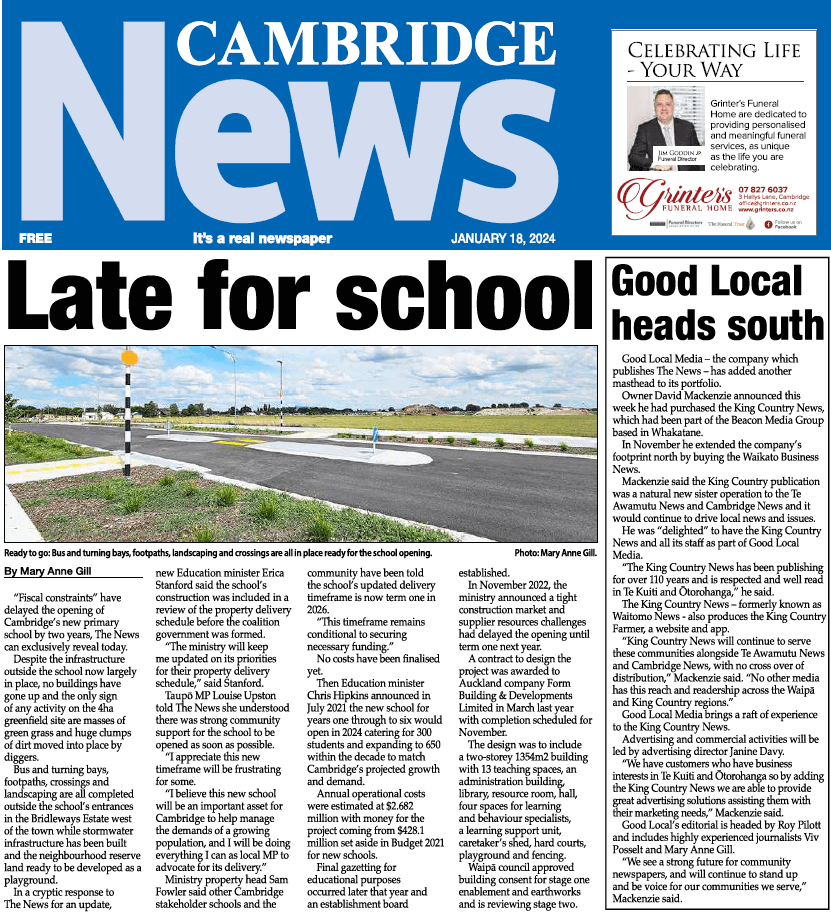The Government’s move to restrict spending on education projects – revealed six weeks ago by The News – will have implications for the construction industry and families’ moving decisions.
A lead story in The News’ sister paper the Cambridge News on January 18 revealed “fiscal constraints” were responsible for delaying the school and had thwarted the marketing for Bridleways Estate built around the school’s presence at the heart of a “vibrant, intergenerational community”.
The penny has now dropped that it is not the only victim of the coalition government’s announcement this week to put education construction on hold.

Erica Stanford
Education minister Erica Stanford said national blowouts appeared to have been a result of “bespoke and over ambitious” construction plans.
Upgrades for up to 350 schools were now at risk and “exciting building projects” might not be delivered, she said.
The list of those schools was not available when this edition went to press.
In response to The News’ questions, Stanford confirmed there were fiscal constraints for the Education ministry’s property delivery schedule.

Mike Pettit
Cambridge Primary School principal Mike Pettit, also a Waipā district councillor, told councillors last week he had been told buildings loaded onto trucks for roll-challenged schools around the country had been stopped from going anywhere by the government.
He told staff to get alongside education officials to find out what was going on with stage two of the new school in Cambridge because so many families were moving to the subdivision in anticipation of its completion.
Much of the infrastructure for the Cambridge school was already in place in the council’s C2 growth cell which has consent for 2500 homes, a retirement village, water utilities and roading.
Cambridge Road between Hugo Shaw Drive – the main entry to Bridleways Estate – and the Velodrome is full steam ahead with a new road and roundabout to cater for developments either side of the road.
Construction was to have started soon at the unnamed school on a two-storey 1354m2 building with 13 teaching spaces, an administration building, library, resource room, hall, four spaces for learning and behaviour specialists, a learning support unit, caretaker’s shed, hard courts, playground and fencing.

Louise Upston
Where greenfield schools are being planned, the construction industry arrives with subdivision plans.
Taupō MP Louise Upston told The News last month the Cambridge school would be an important asset for Cambridge to help manage the demands of a growing population.
“I will be doing everything I can as local MP to advocate for its delivery.”
See: Late for school

The Bridleways Estate under construction. Photo: Mary Anne Gill.










